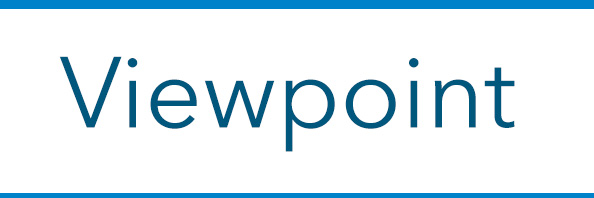“One of the hardest things to deal with in this type of crisis is being able to go the distance.”
— Moderna CEO Stephane Bancel
As a college president, I am used to being both the proverbial tortoise and the hare — I can create urgency and speed around important initiatives when needed, and I try to leverage a “slow and steady wins the race” approach when necessary to garner maximum buy-in for change.

But then, as the Covid pandemic stretched from 2020 into 2021 and then 2022, the push and pull nature of the Covid presidency made toggling between the two more difficult. The constant need for tactical responses left me at times little energy for the important strategic initiatives, like launching customer service communication technology, that would enhance student success, particularly given many of the “silver linings” and opportunities presented by the pandemic. To be honest, I felt like I was “going the distance,” but backwards.
And remember how presidents were encouraged to “show vulnerability as leaders” during this time? This is something that didn’t require much a stretch for me. But showing that same vulnerability to other college presidents has been difficult, and, as the silver linings faded and the baffling trends of 2020, 2021 and 2022 took shape, I questioned whether I could “go the distance” with some of the challenges our sector is facing.
What became clear to me during the past nine months, in particular, is that identifying, sharing and responding to these trends — particularly with the board of trustees and the faculty and staff — has better equipped me to “go the distance,” but quickly, in serving our students. Here are the trends:
Enrollment and retention
According to a recent report by the National Student Clearinghouse, enrollment at community colleges has declined by more than 10% nationally during 2021. While some colleges may be experiencing enrollment increases for new students, retention of current students has also decreased.
Students and potential students are not returning because they can make more money in the workforce. The conundrum here is that these individuals will only progress so far in the workforce without a college degree or certificate.
But will they? More and more, the value of a college degree or certificate is questioned by employers and current or potential students alike. A 2022 Lumina/Gallup study on “The State of Higher Education” reported that more than half of high school students surveyed would not immediately pursue higher education, and of the students surveyed who have never enrolled in higher education, half reported the cost of education to be a major factor in their decision.
A new reality is setting in at Clark State College (Ohio), and our focus on student success has had to adapt to students who, when they do wish to pursue higher education, they are part-time (nearly 80% of our students are currently part-time, when this number was 40% a decade ago), they need increased and varied wraparound services (which, like many colleges, we have attempted to resource for many years), and they want shorter term programs with a focus on integration of basic skills.
Even the “adult learner,” who community colleges have served since our inception, has changed, and an equity lens must be at the heart of student onboarding, class scheduling, support services and technology needs.
Unpredictable workforce participation and closing skills’ gaps
Unemployment hovers between 3% and 4% in our region in Ohio. The frustration that our trusted business and industry partners feel parallels the college’s frustration in attracting and retaining students, particularly in high-wage careers like manufacturing, information technology, skilled trades and healthcare.
The addiction and mental health crises are real and impact employers and their employees greatly, particularly in terms of lost work time and employee turnover. The Ohio Department of Health estimates that nearly 700,000 Ohio residents abuse substances annually.
For this reason, and with employer feedback, Clark State has been innovative in our partnerships with state agencies and industry to close skills gaps. Our social work and workforce development programs have trained human resources and other professionals as peer-to-peer recovery specialists to work within their businesses to support and retain employees who have family members or are themselves suffering from addiction or mental health issues.
Colleges are not immune to workforce challenges of their own. Clark State’s employee turnover rate was 14% this year. If I include retirees, that number jumps to 18%. Prior to the pandemic, our turnover rate was around 11%, and making the case for working in a higher education setting, particularly for those faculty and staff who can double or triple their salaries in private industry, has become an absolute imperative. Looking at pay structures and other incentives has become routine, rather than something we do every three to five years for salary equity.
Diminishing resources
The federal Higher Education Emergency Relief Fund (HEERF) monies are dwindling, and the help these funds provided for our students was game-changing for them. Students at Clark State who received HEERF monies graduated and were retained at higher rates. Our course completion rate for minority students jumped 4% between 2020 and 2021, from 64% to 68%, and the overall student population increased from 78% to 81%, and more students completed short-term credentials during this time as well.
While we are not satisfied with the equity gaps presented here, we know that these additional monies proved that more resources help students succeed, and now we need a strategy to replicate this support.
At Clark State, we are maximizing and reexamining foundation scholarship dollars to make up for this funding and target it to the neediest students, and we are advocating at the state level for additional funding that would go directly to neediest students. We are also reaching out to current and former students who never finished a credential about the upcoming Student Loan Forgiveness program, and how we can accelerate their time to a credential at Clark State.
But these are short-term strategies. Long-term, Clark State’s recently adopted 2023-26 strategic plan will provide a framework for sustainable growth and development of student support funds. These trends will require and have required effective college planning, or going the distance, but quickly, and are predicated on transparency of data — and how we respond to that data. Scaffolding institutional data around these challenges has been directional for Clark State, the board of trustees, faculty, staff and students.

